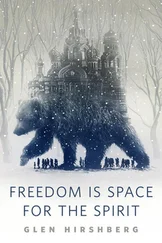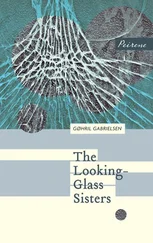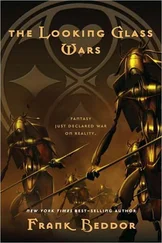Years have gone by, centuries, and Palenque survives. The people of Palenque continue to believe that the earth, their earth, is a body made of fields, jungles, wind, people, that it breathes through trees and cries through streams. They continue to believe that those who have enjoyed life will be rewarded in paradise and those who haven’t will burn in hell, in the eternal fire reserved for the cold women and men who disobeyed the sacred voices that command us to live life with pleasure and passion.
Thinkers capable of elevating the prejudices of the ruling class to the category of science have never been lacking, but in nineteenth-century Europe they were particularly bountiful. The philosopher Auguste Comte, a founder of modern sociology, believed in the superiority of the white race and the perpetual childhood of women. Like nearly all his colleagues, Comte harbored no doubts about one essential principle: white men are the most fit to rule over those condemned to the lower rungs of the social ladder.
Cesare Lombroso turned racism into criminology. To demonstrate the innate dangerousness of “primitive savages,” this Italian professor, who happened to be Jewish, developed a method quite similar to the one Hitler would use half a century later to justify anti-Semitism. According to Lombroso, criminals are born criminals and the animal features that give them away are the very same ones that black Africans and American Indians inherited from the Mongoloid race. Murderers have high cheekbones, frizzy black hair, sparse beards, large incisors. Robbers have flat noses; rapists, swollen lips and eyelids. Like savages, criminals do not blush, which allows them to lie shamelessly. Women do blush, though Lombroso discovered that “even women considered normal have some criminal features.” Revolutionaries, too: “I have never seen an anarchist with a symmetrical face.”
Herbert Spencer attributed to the empire of reason inequalities that today spring from the law of the market. Though a century has passed, some of his truths sound rather modern, well suited to our neoliberal days. According to Spencer the state ought to remain on the margins and not interfere with the processes of “natural selection” that give power to the strongest and best-endowed. Social welfare only adds to the herd of lazy bums, and public education sows discontent. The state ought to stick to instructing “inferior races” in manual trades and keeping them away from alcohol.
Heroes and Villains
Inside some athletes lives a crowd. In the forties, when blacks couldn’t even share a cemetery with whites in the United States, Jackie Robinson was a baseball star. Millions of oppressed blacks found dignity through this athlete who shone like no one else in an exclusively white sport. Fans threw insults and peanuts at him; players spat on him; death threats welcomed him home.
In 1996, while the world was busy acclaiming Nelson Mandela and his long struggle against racism, the athlete Josia Thugwane became the first black South African to win an Olympic medal. Over the past few years, it has become normal for Olympic medals to end up in the hands of Kenyans, Ethiopians, Somalis, Burundis, or South Africans. Tiger Woods, the Mozart of golf, is a star in a rich white sport, and for years now basketball and boxing have been dominated by blacks. Blacks and mulattos are the players who give soccer most of its joy and beauty.
In racism’s doublespeak, it is perfectly acceptable to applaud successful blacks and damn the rest. At the World Cup won by France in 1998, nearly all the players in blue who started each match to the tune of the “Marseillaise” were immigrants. A poll taken during the Cup confirmed that four of every ten people in France harbor racial prejudice, but every Frenchman celebrated that triumph as if those blacks and Arabs were the sons of Joan of Arc.
As when the police conduct a search, racism finds whatever it has planted. Until the early years of the twentieth century, weighing brains was a common way of measuring intelligence. This scientific method, which gave rise to obscene exhibitions of encephalitic matter, demonstrated that Indians, blacks, and women had rather light brains. Gabriel René Moreno, the great intellectual of nineteenth-century Bolivia, proved, scale in hand, that Indian and mestizo brains weighed five to ten ounces less than white brains. The weight of the brain has about as much to do with intelligence as the size of the penis does with sexual ability — in other words, none. But scientists tracked down famous brains, undaunted by disconcerting results. The brain of Anatole France, for example, weighed half as much as Ivan Turgenev’s, even though their literary merits were considered more or less the same.
A century ago in Paris, Alfred Binet invented the first IQ test, with the laudable objective of identifying children who needed more help from their teachers. The inventor was the first to say that this instrument was of no use in measuring intelligence, which cannot be measured, and should not be used to disqualify anyone from anything. But by 1913, U.S. officials were already using the Binet test at the very gates of New York, right near the Statue of Liberty, on recently arrived Jewish, Hungarian, Italian, and Russian immigrants. They found that eight out of every ten immigrants had the minds of children. Three years later, Bolivian authorities put the test to work in the public schools of Potosí: eight out of every ten children there were abnormal. And ever since, racial and social prejudice has relied on the scientific aura of intellectual coefficients, treating people as if they were numbers. In 1994, The Bell Curve was a spectacular best-seller in the United States. Written by two university professors, it proclaimed unabashedly what many thought but didn’t dare say above a whisper: that blacks and poor people have lower IQs than whites and the rich thanks to their genetic makeup. To waste money on education and social assistance for them would be like throwing water into the sea. The poor, especially those with black skin, are donkeys, and not because they’re poor. Rather they’re poor because they’re donkeys.
Names
The marathon runner Doroteo Guamuch, a Quiché Indian, was the greatest athlete in Guatemalan history. Since he was the pride and glory of his country, he had to change his Mayan name and call himself Mateo Flores.
In homage to his feats, the country’s largest soccer stadium was named Mateo Flores while the man himself earned his living as a caddy, carrying clubs and collecting balls and tips at the Mayan Golf Club.
Racism only acknowledges evidence that supports its own prejudices. African art has been a primordial source of inspiration for, and often the object of blatant plagiarism by, the most famous painters and sculptors of the twentieth century. And where would we be without the music that came out of Africa to spawn new magic in Brazil, the United States, and the Caribbean? African rhythms saved the world from dying of boredom or sorrow. Nevertheless, to Jorge Luis Borges, Arnold Toynbee, and many other worthy modern intellectuals, the cultural sterility of blacks was self-evident.
In the Americas, our culture is the daughter of several mothers. Our multiple identity gains its creative vitality from the fertile contradiction of its parts. But we have been trained not to see ourselves, not to see the full splendor of the human condition in all its glory. The Americas are sick with racism, blind in both eyes from North to South. Latin Americans of my generation were educated by Hollywood. Indians were guys with long faces wearing feathers and war paint, seasick from riding in circles. Of Africa all we knew was what we learned from Professor Tarzan, the invention of a novelist who never set foot on that continent.
Читать дальше











